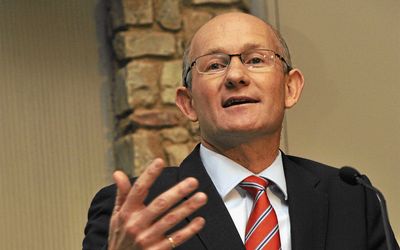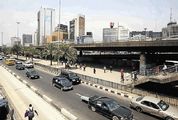Consumer debt strains Standard Bank
by Edward West
2013-04-29 07:52:56.0
DEBT-heavy consumers’ efforts to cut debt and subdued economic growth put strain on Standard Bank’s lending books and its recovery of nonperforming loans, Peter Schlebusch, CE of the bank’s personal and business banking unit, said in the 2012 annual report, which was released on Friday.
"The South African economy has shown limited signs of recovery … consumers’ debt-to-income levels remain high, with continued efforts by consumers to deleverage," Mr Schlebusch said.
The Banking Association of South Africa (Basa) is preparing proposals, to be completed by the end of next month, for new regulations designed to prevent further over-indebtedness among consumers.
"Standard Bank is participating in the Basa process to ensure an appropriate balance between all customers and stakeholder needs. Standard Bank feels this is the most suitable way to deal with the industry and societal challenges around this topic," the bank told Business Day.
Late last week the Reserve Bank said that the banking sector’s total exposure to unsecured credit had reached R441bn in the fourth quarter of last year, 11% higher than the R398bn of the previous quarter.
Standard’s exposure to unsecured lending was 10%-20% of total lending.
The personal and business banking unit delivered on its strategy last year in spite of the tough environment, Mr Schlebusch said.
Standard Bank Group’s credit loss ratio rose to 1.08% last year from 0.87% the previous year.
This means that for every rand owed by the bank’s customers, the group incurred an average loss of 1.08c last year, a loss that had widened from 0.87c in 2011.
The widening of credit loss ratios has become an industry phenomenon.
Absa Group’s credit loss ratio rose sharply last year to 1.59% from 1.01% in 2011 after credit loss impairments caused its earnings to decline.
The credit loss ratio of FirstRand, South Africa’s second-biggest lender, increased to 0.91% in the six months to December 31 compared with 0.8% in the same period a year before.
Only Nedbank’s credit loss ratio improved — to 1.05% last year from 1.13% a year before.
Standard’s credit impairment charges rose to R8.69bn last year from R7.89bn in 2011, largely due to higher impairment provisioning against exposures in the Corporate and Investment Banking division, particularly on Middle Eastern exposures, which were no longer aligned to strategy. The impairment charge in personal unsecured lending (excluding cards) increased sharply to R2.3bn from R1.3bn due to the increased incidence of default in the R3.7bn domestic personal term loans book, the annual report showed.
Standard said it did not expect debt-to-disposable income levels among South African consumers to reduce significantly over the short to medium term, although a slow improvement in disposable income levels may be positive for the bank’s loan growth this year.
Bank loans and advances grew in line with rising debt-to-disposable incomes in South Africa until 2008, but after that customers started to rebuild their balance sheets.
Standard grew its loans and advances outside South Africato ensure its loan book continued to grow, while indebtedness among South Africa’s consumers improved.
The negative endowment effect on the bank caused by the lowest interest rates in 37 years in South Africa was offset last year by higher interest rates in East Africa and Nigeria, which contributed to a net positive effect for the group.

Peter Schlebusch, Standard Bank group head of personal and business banking. Picture: FINANCIAL MAIL
DEBT-heavy consumers’ efforts to cut debt and subdued economic growth put strain on Standard Bank’s lending books and its recovery of nonperforming loans, Peter Schlebusch, CE of the bank’s personal and business banking unit, said in the 2012 annual report, which was released on Friday.
"The South African economy has shown limited signs of recovery … consumers’ debt-to-income levels remain high, with continued efforts by consumers to deleverage," Mr Schlebusch said.
The Banking Association of South Africa (Basa) is preparing proposals, to be completed by the end of next month, for new regulations designed to prevent further over-indebtedness among consumers.
"Standard Bank is participating in the Basa process to ensure an appropriate balance between all customers and stakeholder needs. Standard Bank feels this is the most suitable way to deal with the industry and societal challenges around this topic," the bank told Business Day.
Late last week the Reserve Bank said that the banking sector’s total exposure to unsecured credit had reached R441bn in the fourth quarter of last year, 11% higher than the R398bn of the previous quarter.
Standard’s exposure to unsecured lending was 10%-20% of total lending.
The personal and business banking unit delivered on its strategy last year in spite of the tough environment, Mr Schlebusch said.
Standard Bank Group’s credit loss ratio rose to 1.08% last year from 0.87% the previous year.
This means that for every rand owed by the bank’s customers, the group incurred an average loss of 1.08c last year, a loss that had widened from 0.87c in 2011.
The widening of credit loss ratios has become an industry phenomenon.
Absa Group’s credit loss ratio rose sharply last year to 1.59% from 1.01% in 2011 after credit loss impairments caused its earnings to decline.
The credit loss ratio of FirstRand, South Africa’s second-biggest lender, increased to 0.91% in the six months to December 31 compared with 0.8% in the same period a year before.
Only Nedbank’s credit loss ratio improved — to 1.05% last year from 1.13% a year before.
Standard’s credit impairment charges rose to R8.69bn last year from R7.89bn in 2011, largely due to higher impairment provisioning against exposures in the Corporate and Investment Banking division, particularly on Middle Eastern exposures, which were no longer aligned to strategy. The impairment charge in personal unsecured lending (excluding cards) increased sharply to R2.3bn from R1.3bn due to the increased incidence of default in the R3.7bn domestic personal term loans book, the annual report showed.
Standard said it did not expect debt-to-disposable income levels among South African consumers to reduce significantly over the short to medium term, although a slow improvement in disposable income levels may be positive for the bank’s loan growth this year.
Bank loans and advances grew in line with rising debt-to-disposable incomes in South Africa until 2008, but after that customers started to rebuild their balance sheets.
Standard grew its loans and advances outside South Africato ensure its loan book continued to grow, while indebtedness among South Africa’s consumers improved.
The negative endowment effect on the bank caused by the lowest interest rates in 37 years in South Africa was offset last year by higher interest rates in East Africa and Nigeria, which contributed to a net positive effect for the group.



















